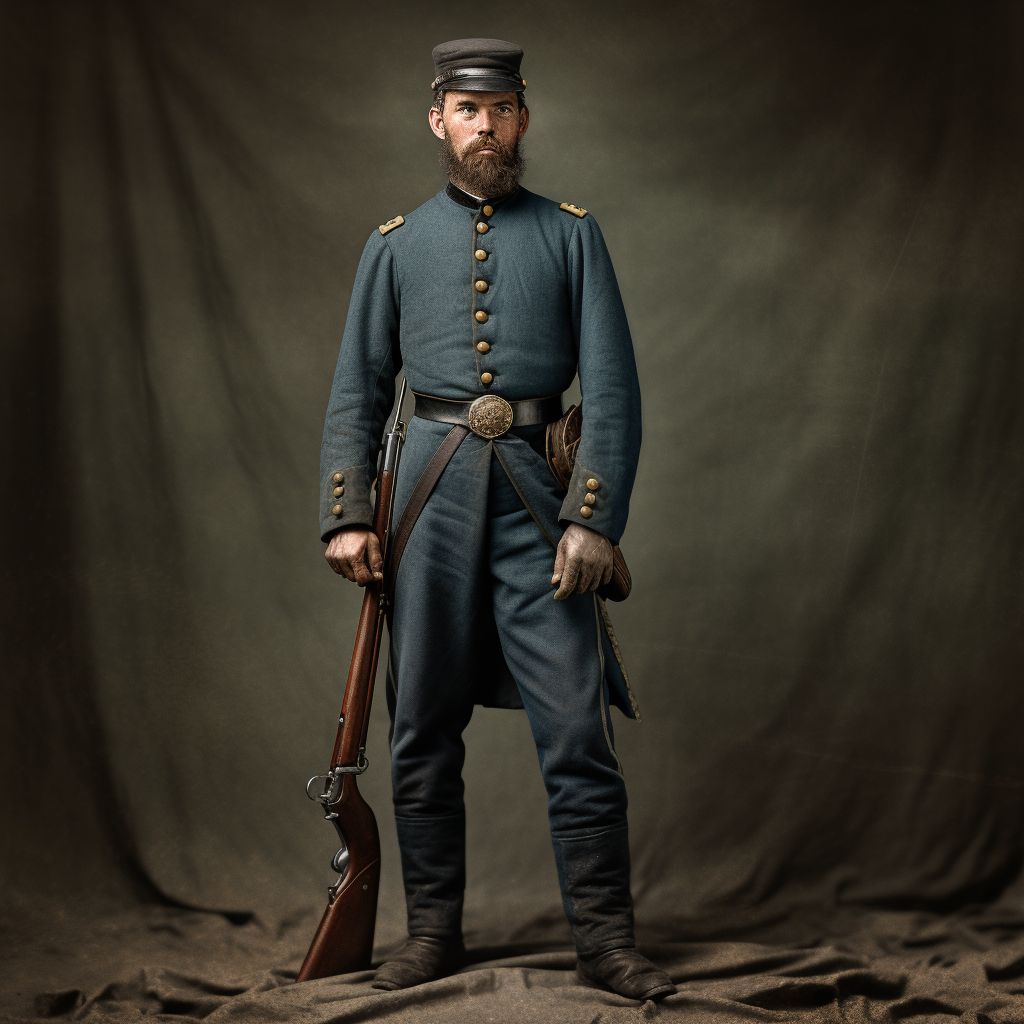Soldier
Soldiers have long been the backbone of the United States military, defending the nation's interests and ensuring the safety and security of its citizens. As the 19th century drew to a close, the soldier profession faced a period of profound change brought about by the rapid advancements in Automaton technology. This article explores the impact of these innovations on the lives of American soldiers, and the government's cautious approach to integrating auto sapient automatons into the military.
The Role of Soldiers
Soldiers in the 19th century were responsible for a wide range of duties, from maintaining national security to engaging in combat operations both at home and abroad. They were trained in various forms of warfare, including infantry tactics, cavalry maneuvers, and artillery operations. Soldiers were often stationed in remote locations, where they were responsible for protecting settlers, maintaining order, and enforcing the law.
The military was a strict hierarchy, with soldiers following a chain of command and adhering to strict codes of conduct and discipline. In addition to their combat duties, soldiers were also required to perform tasks such as building fortifications, maintaining equipment, and conducting reconnaissance.
The Advent of Automatons
The development of auto sapient automatons by Morgan's Mechanicals and Morgan's Automatons in the 1870s had the potential to revolutionize the way in which soldiers performed their duties. These advanced machines were capable of performing a range of tasks, from heavy lifting to complex calculations, and their introduction promised to increase efficiency and reduce the need for Human labor.
However, the government was slow to adopt the use of auto sapient automatons in the military, primarily due to concerns about the safety and reliability of these machines. Instead, the government began conducting its own tests with the guard models produced by Morgan's Automatons, in an effort to determine the potential benefits and risks associated with their use in military operations.
The Balancing Act
The cautious approach taken by the government to integrate auto sapient automatons into the military presented both opportunities and challenges for soldiers. On one hand, the potential for increased efficiency and reduced risk to human life offered by these machines was a tantalizing prospect. Automatons could be used to perform dangerous tasks, such as reconnaissance in hostile territory or the handling of explosives, which would reduce the risk to soldiers.
On the other hand, there were concerns about the potential loss of traditional military skills and the devaluation of human soldiers in the face of advanced technology. Many soldiers and military leaders worried that the reliance on automatons could lead to a diminished role for human soldiers and a weakening of the military's core values of courage, honor, and duty.
Conclusion
As the 19th century drew to a close, the soldier profession in the United States found itself at a crossroads. The advent of auto sapient automatons and their potential integration into the military raised important questions about the future of the profession and the role of human soldiers in an increasingly mechanized world. The challenge for military leaders and policymakers was to find a balance between embracing the benefits of new technology and preserving the traditions and values that had defined the soldier profession for centuries.
Type
Military

